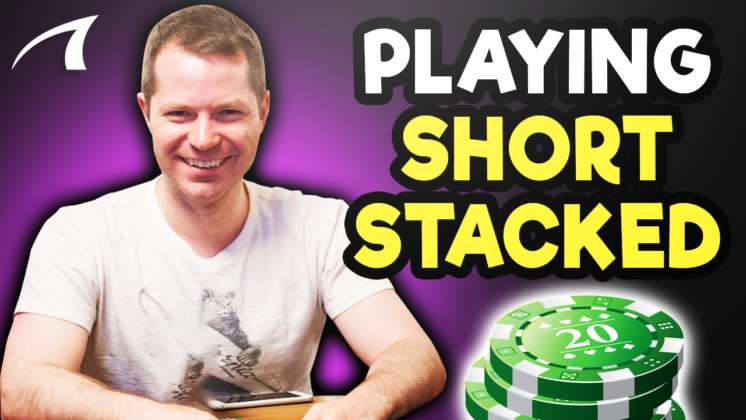Cash game players are used to playing with hundreds of big blinds in their stacks, but playing deep stacked is a luxury that MTT players often can’t afford. In fact, if you are a tournament poker player, you are probably all too familiar with the concept of playing with a short stack and having to survive with such a stack for hours.
The escalating blinds in tournaments inevitably lead to some of the players sitting on a small stack in the late stages of the game, and if you play frequently, you will find yourself in such spots quite often.
Instead of surrendering when you fall onto a short stack territory and simply punting your stack away, you can learn proper short stack strategy and play the short stack like the best tournament players out there.
That journey starts here, with our short stack strategy tips that are guaranteed to improve your tournament strategy and allow you to survive and build your short stack up more often than most.
- What Is Short Stack Poker?
- Short Stack Tournament Strategy Tips
- Tip #1 – Adjusting Your Opening Ranges
- Tip #2 – Learn the Push/Fold Charts
- Tip #3 – Add Limps to Your Strategy
- Tip #4 – Always Raise Small
- Tip #5 – Be Mindful of Your Opponents’ Ranges
- Tip #6 – Master Squeeze Re-Steal
- Tip #7 – Make Things Simple with Small Pocket Pairs
- Tip #8 – Get Aggressive with Your Draws
- Tip #9 – Adjust Your C-Betting Ranges
- Tip #10 – Master the Art of ICM
What Is Short Stack Poker?
There are many definitions of what a short stack is in poker. If you ask a cash game player, they may tell you that someone sitting on 50 bbs is short-stacking. A tournament player, on the other hand, will probably see a 50 bb stack as tons of chips.
In tournament poker, we usually talk about a short stack when one approaches 30 bbs, while anything below 20 bbs can surely be considered a short stack.
For this article, we are going to assume a stack of 20 or fewer big blinds as a short stack, and we will talk about concepts that apply to playing with these stack sizes.
Short Stack Tournament Strategy Tips
Now that we have covered the basics and explained the concept of short-stack poker in general, it’s time to get into some actual strategy tips.
Each tip on this list is a different area of short stack strategy that you should pay attention to and practice separately, putting them all together to form a perfect short stack strategy. Let’s begin!
Tip #1 – Adjusting Your Opening Ranges
When playing with deeper stacks, hands like suited connectors can often be a part of your opening range from later positions. For instance, you would not mind opening 65s in a late position in order to have more board coverage on various flops.
However, as your stack dwindles to under 20 big blinds, you will have far fewer opportunities to even play post flop. Even when you do, a hand like this will rarely flop top pair, and the draws you make with it won’t be too spectacular either.
Instead of hands like this, you will do much better opening more hands that contain big cards and fewer hands that contain small cards in general.
For example, a hand like KT off-suit will do better as an open on a short stack than 65s, as it will allow you to flop top pair or open-enders with an overcard and comfortably put your entire stack in.
When entering pots as a short stack, you should make sure to consider later streets and understand that you will have far less room to maneuver on flop, turn, or river than you would with a bigger stack.
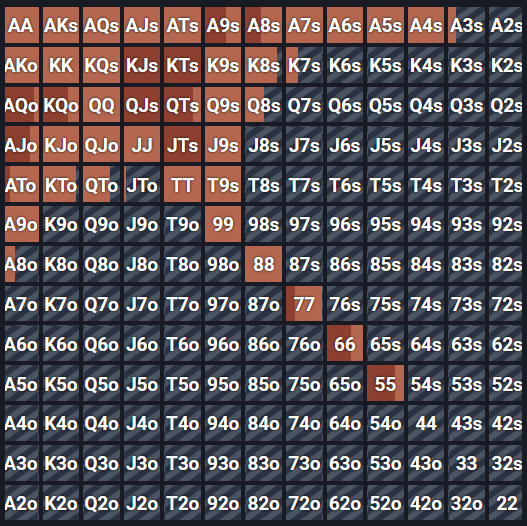
The GTO Preflop Charts on PokerCoaching.com can show you proper short stack preflop ranges.
Tip #2 – Learn the Push/Fold Charts
While we definitely don’t recommend always shoving or folding with all your hands as a short stack, knowing which hands are profitable shoves from different positions on different stack sizes is an important tournament poker skill.
High quality push/fold charts will teach you how to play a short stack profitably without any fancy plays, and they will make your life easier in some spots.
If you find yourself having a hand that you know is a profitable shove, but you don’t quite feel comfortable opening and playing post flop, going all-in will be a reasonable play.
Reducing your entire short stack strategy to just pushing or folding is not the optimal way to play, but being able to play some push/fold poker will definitely not hurt.
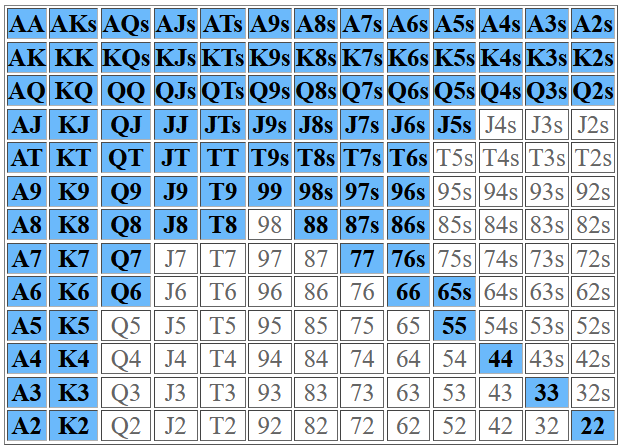
Studying Push/Fold Charts is critical to properly playing a short stack.
Tip #3 – Add Limps to Your Strategy
Generally speaking, limping is not a very strong play, and you should avoid limping when first into a pot in most situations.
However, as you start getting into the short stack territory, there can be some merit to adding limps into your strategy and playing some hands as limps.
The reason to limp instead of raise is because you may be in an awkward spot where you have a hand you know is strong enough to play, but you don’t quite want to face a 3-bet and get blown off your equity.
By limping such a hand, like QTs or J9s, you may get a chance to see a cheap flop, realize your equity, and capitalize on your position on the flop.
Of course, in order to balance out your limps, you will need to also limp some strong hands, which will allow you to go all-in sometimes if the blinds decide to attack.
Tip #4 – Always Raise Small
As your stack gets shorter and you enter the later stages of the tournament, you should raise very small as the norm. In fact, a minimum opening raise of just 2x works like a charm and usually achieves the exact same results as a bigger raise when you are a short stack.
Generally speaking, you will usually not get too many calls from players other than the big blind when you raise from a short stack, which means you want to risk the minimum to try and pick up the blinds.
When you raise 2x and get re-raised, you will know very clearly what to do with most of your hands. Get it all-in with your strong hands and fold the ones you are not prepared to commit your stack with.
Mix the adjustment of your opening raise size with the adjustment to a more linear opening range, and you will end up finding yourself in more favorable situations overall.

Rise small when short stacked. (Image courtesy of Hayley Hochstetler)
Tip #5 – Be Mindful of Your Opponents’ Ranges
When you open a hand as a short stack and get called by anyone other than the big blind, you will typically be able to determine their range quite accurately. Most players will call your raises in position with hands like QJs or JTs, which they are not comfortable folding but don’t want to 3-bet and commit themselves with either.
For that reason, you will be able to play quite profitably against such calls post flop, as you will have a very good idea of which boards connect with their ranges and which don’t.
On Ace-high boards, you will have a significant range advantage, as AX hands are not going to be a big part of calling ranges in spots like this.
On low boards, you will be able to win with a small c-bet a lot of the time. If you don’t win right there, making a further bet on the turn will often be enough to win it, as your opponent simply didn’t call a short stack’s raise with a hand like 65 or 43.
When the action gets to the flop, always consider what your opponents could actually have and which hands they would have realistically played in the way they did.

Carefully assess your opponents’ range before acting. (Image courtesy of Katerina Lukina)
Tip #6 – Master Squeeze Re-Steal
The re-steal, often called the “squeeze play” as well, is one of the most powerful tools you can have in your arsenal when playing a short stack tournament strategy.
The play is quite simple yet extremely effective. When a player opens the pot and another player calls, you go all-in over the top and maximize your fold equity with a variety of bluffs mixed in with some real value hands.
For example, imagine a scenario where you are dealt A♥2♥ in the big blind sitting on a 20bb stack. The cutoff opens to 2.2x with a stack of 50bb, and the button calls with a stack of 45bb.
When the small blind folds, there are 6.9 big blinds in the pot that are yours for the taking. All you need to do is press that all-in button.
Your A♥2♥ reduces the number of AX combos the opener can have, while the button’s range is generally not going to have too many hands that want to call a 20bb shove.
When called by hands like AK, QQ, or KQ, your A♥2♥ is going to play fairly well and have reasonable equity to double you up and put you in an even better spot.
However, a good majority of the time, both players are simply going to fold. You will have increased your stack by over 30%, and you can keep doing this over and over when riding a stack like this, making it one of the most powerful short stack strategy plays out there.
Tip #7 – Make Things Simple with Small Pocket Pairs
Small pocket pairs generally play quite well in shot stack situations equity-wise, but they can be a bit hard to play post flop with low stack-to-pot ratios.
For that reason, the simplest way to play your small pocket pairs is to go all-in with them whenever it’s profitable according to your push/fold charts.
When stacks get to below 20 big blinds, most pocket pairs will be profitable shoves from all positions, but you may want to fold pairs like 22 and 33 in early seats.
As you get closer to the button, you will definitely want to go all-in and steal as many blinds and antes as possible with these hands, and when you do get called, you will still have plenty of equity against hands like AK, AQ, or KQ.
Tip #8 – Get Aggressive with Your Draws
When you are sitting on a big stack, there are many ways to play your draws and many different scenarios in which you must adjust your strategy. Sitting on a short stack, there is only one way to go about your draws, and that’s playing them aggressively and hoping your opponents fold. If they don’t, you can always just get there.
Hands like flush draws and open-ended straight draws are ideal candidates to check-raise all-in on the flop and look to maximize your fold equity.
On the other hand, trying to play your draws passively, just calling bets, and then folding when you don’t get there is not the best idea, as you can increase your EV quite a bit by playing aggressively in these situations.
You will still get some folds from very weak hands that decided to c-bet the flop, and that alone is enough to make playing in this manner quite profitable.
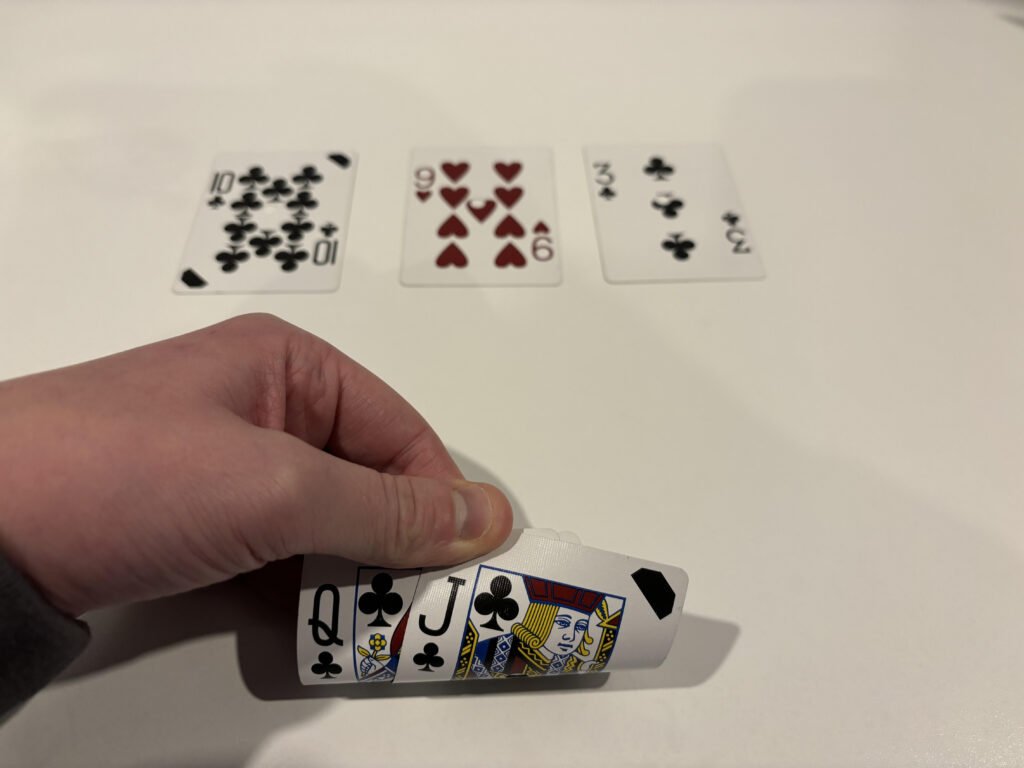
Tip #9 – Adjust Your C-Betting Ranges
Playing the flop as a short stack can be quite difficult, and many players make significant mistakes in how they continue after opening the pot and getting one caller. However, if you want to play a good short stack strategy, you will need to know how to adjust your c-betting range properly for optimal results.
The adjustment should be made in the way of range polarization, meaning you should be c-betting a very polarized range.
When the flop comes out, you will want to bet with the hands that hit quite well, such as top pair or strong draws, which you are more than happy to commit your stack with. On the other end of the spectrum, you should have hands with complete air, which you will fold if your opponent puts you all-in.
All hands in-between, such as middle pairs or pocket pairs on boards with overcards, you will want to check and try to play a small pot with.
Every once in a while, make sure to also check your sets, two pairs, and other monsters so as to ensure your opponents can’t easily exploit you when you check the flop.
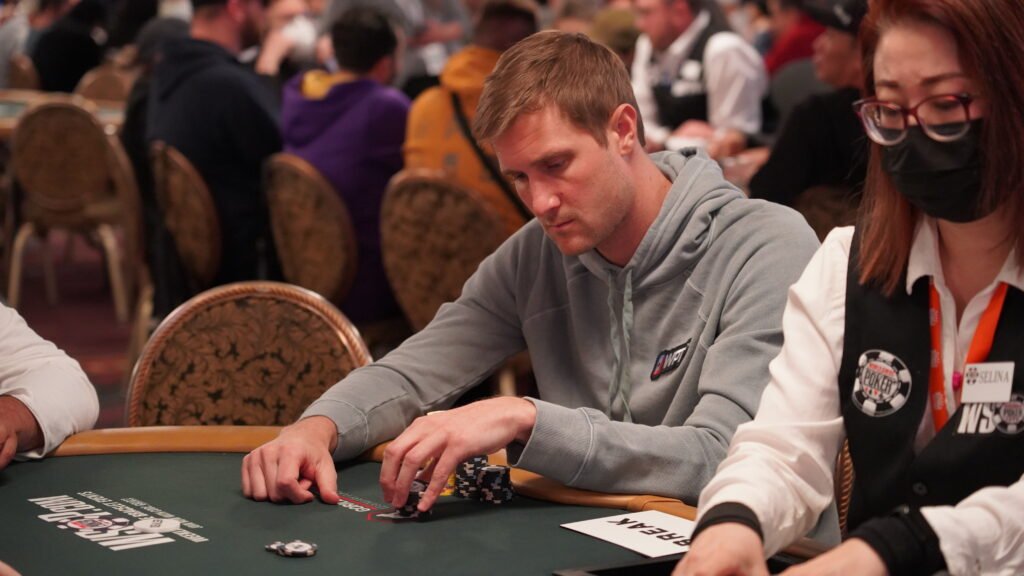
Before executing a c-bet when short stacked, adjust your range.
Tip #10 – Master the Art of ICM
Independent chip model (ICM) is an incredibly important part of tournament strategy, and it gets increasingly important as your stack dwindles.
As a short stack in the deep stages of a tournament, you will always have to make some tough decisions between looking to build up your stack or outlive your opponents.
By simply not busting out, you will often give yourself a chance at one or multiple pay jumps, which could possibly be worth more than a double-up from your short stack could.
So, if you want to be a truly great tournament poker player, you will need to learn about and regularly practice ICM strategy so you can make the right decisions when the time comes.
Start by introducing yourself to the concept of ICM, and then use ICM training tools on the regular to make sure you understand how ICM implications affect the decisions you should be making.
